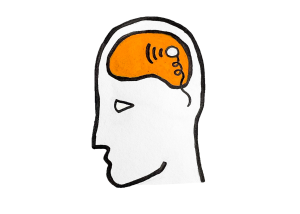Introduction to Poetry Writing
The basics of how to get started writing a poem
January 31, 2023
One may ask, “What is Poetry?” While many view poetry as disorderly and confusing, poetry is a lyrical and emotional method of self-expression that uses elements such as rhythm and form to bring to light one’s feelings and ideas. At most, a poet’s job is to bring forth emotion in readers, whether it be grief, anger or joy; but it should not be directly said. Instead, you want to evoke the reader, leave breadcrumbs behind for them to find and discover what you truly mean to say.
Unlike novels or short stories, poetry must impact readers with the riches and the most stirring words while carrying simplicity. As a result, poetry brings maximum impact. In a second, the words devour your reader into your world.
When writing a poem, you want to devise a topic, which can be the most difficult. In a few aspects, you can seek help in other literary works: A title, setting or character can be the fuel that ignites the fire. The words in a title can bring a unique sound when it rolls off your tongue, leading you to think differently. The setting can bring forth a memory or a dream. A character can remind you of yourself or an experience or specific emotion. There are also real-world events to share; contemporary poetry is the best way to convey new and transformative ideas involving the world. Additionally, there is the opportunity to share your life, a moment of sweetness, success or even defeat.
Once your topic is at hand, finding the right words is next. Journaling will be your best friend at this point. Taking a blank sheet of paper with the title listed, you want to record every word or thought that connects with your topic. Refrain from thinking too intensely. Enjoy the process. Most important is your subconscious’ emotion and ability to relate to your topic. Once finished, re-examine your words and highlight well-written phrases, moments of emotion and even words you favor. Next, ponder on the form of your poem and which form resonates most with your selection of words or sounds. Your poem can take many forms, including unstructured free verse, Haiku, Sonnet, and others.
Once you have chosen a form, write the first line: set the scene and start at a conflict or contradiction. There are many ways to begin, so entertain yourself and mess around with different literary devices and when cornered, seek help through the works of other poets for inspiration. Meanwhile, avoid using too many abstract nouns, develop beautiful imagery and, most importantly, find the sounds that recognize your beauty. You will see that when closing your poem, it ends in a full circle.
Finally, a poem needs to transition for editing. Be mindful of concrete line breaks, which help emphasize essential words or make an idea more evident to the reader. Mixed metaphors, too. They are when two metaphors tend to have a similar concept; The image can be discerning and unclear. Nonetheless, enjoy the beauty of writing poetry and allow you permission to discover the complex truths and statements of emotions.








